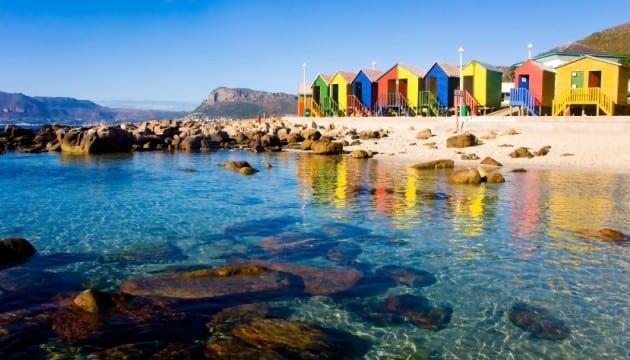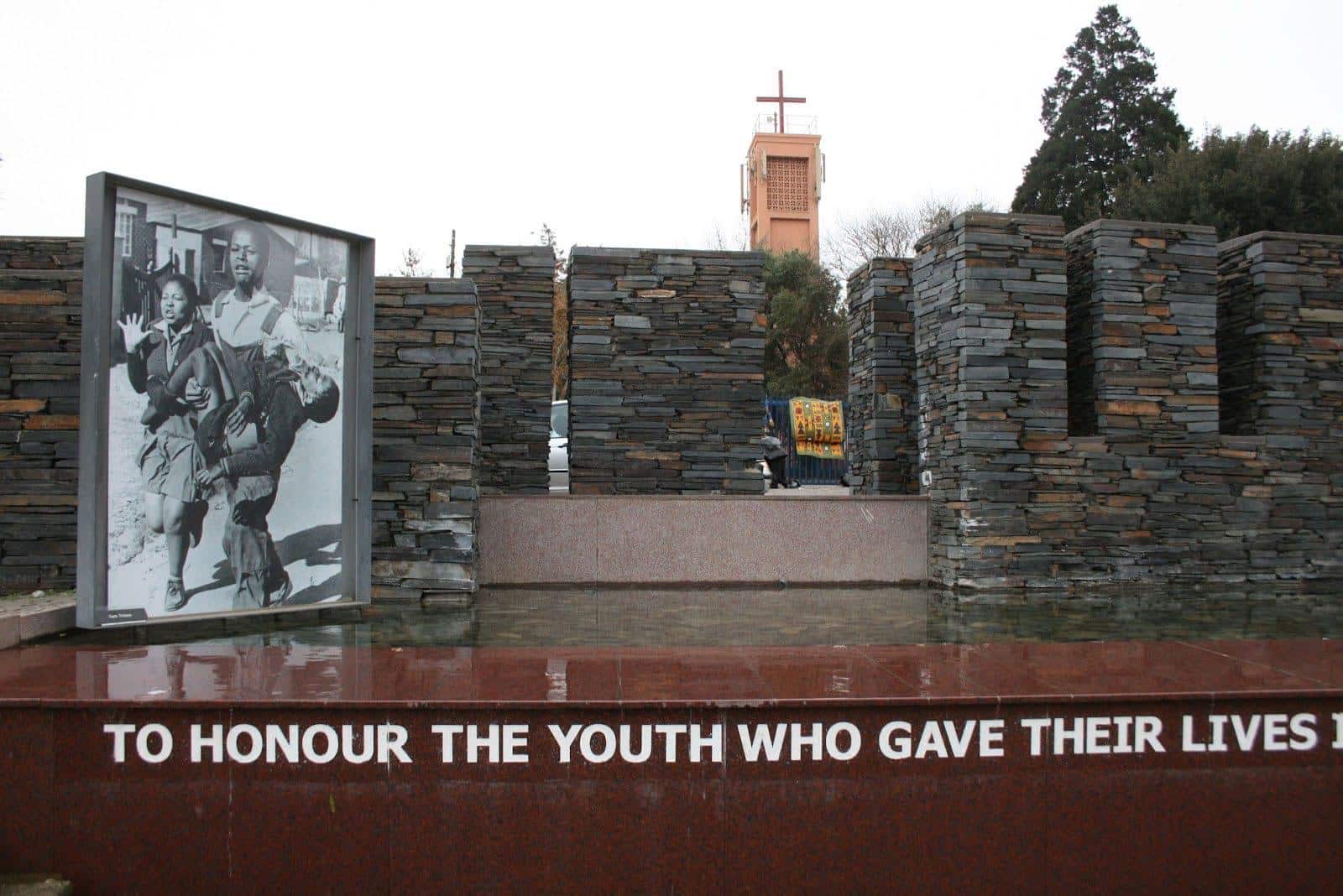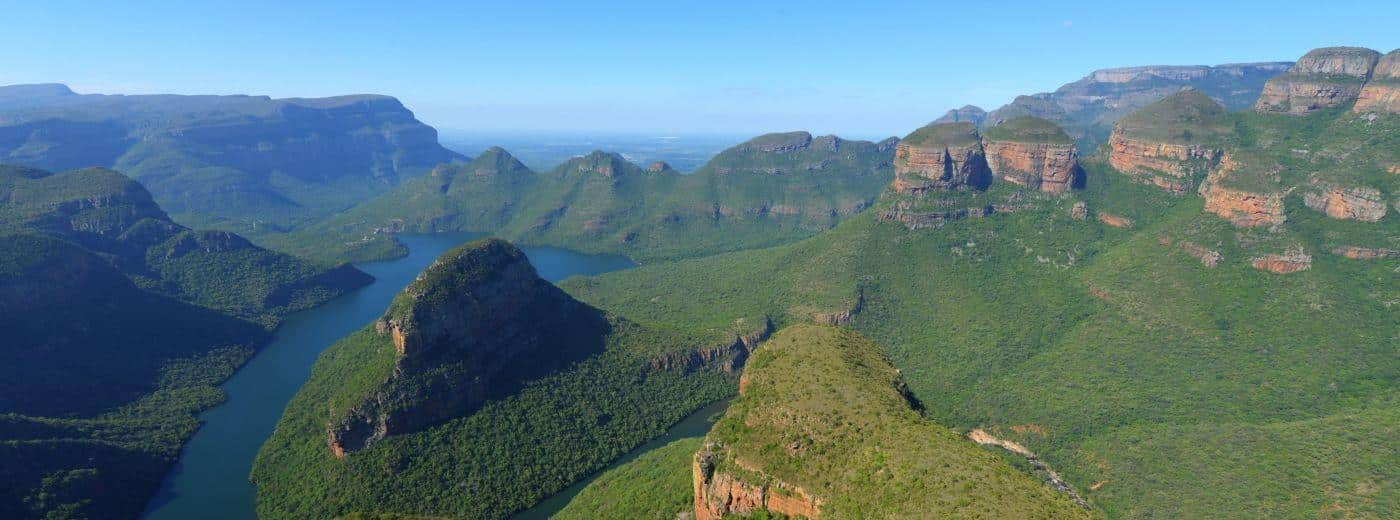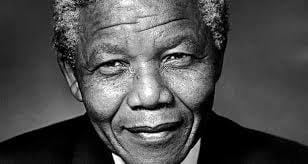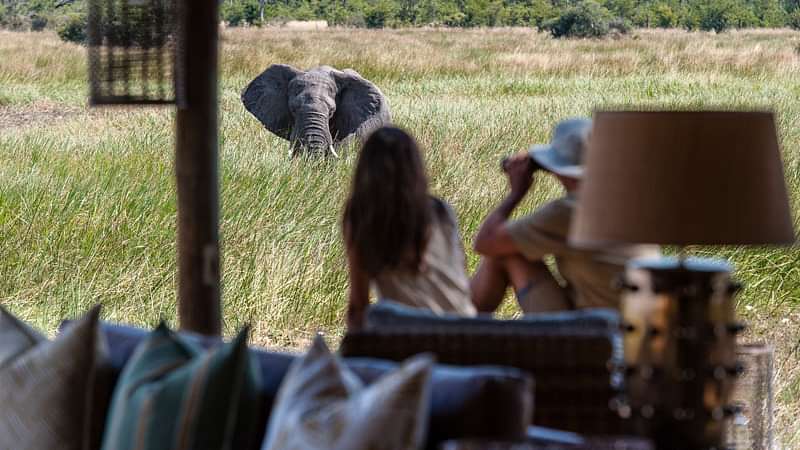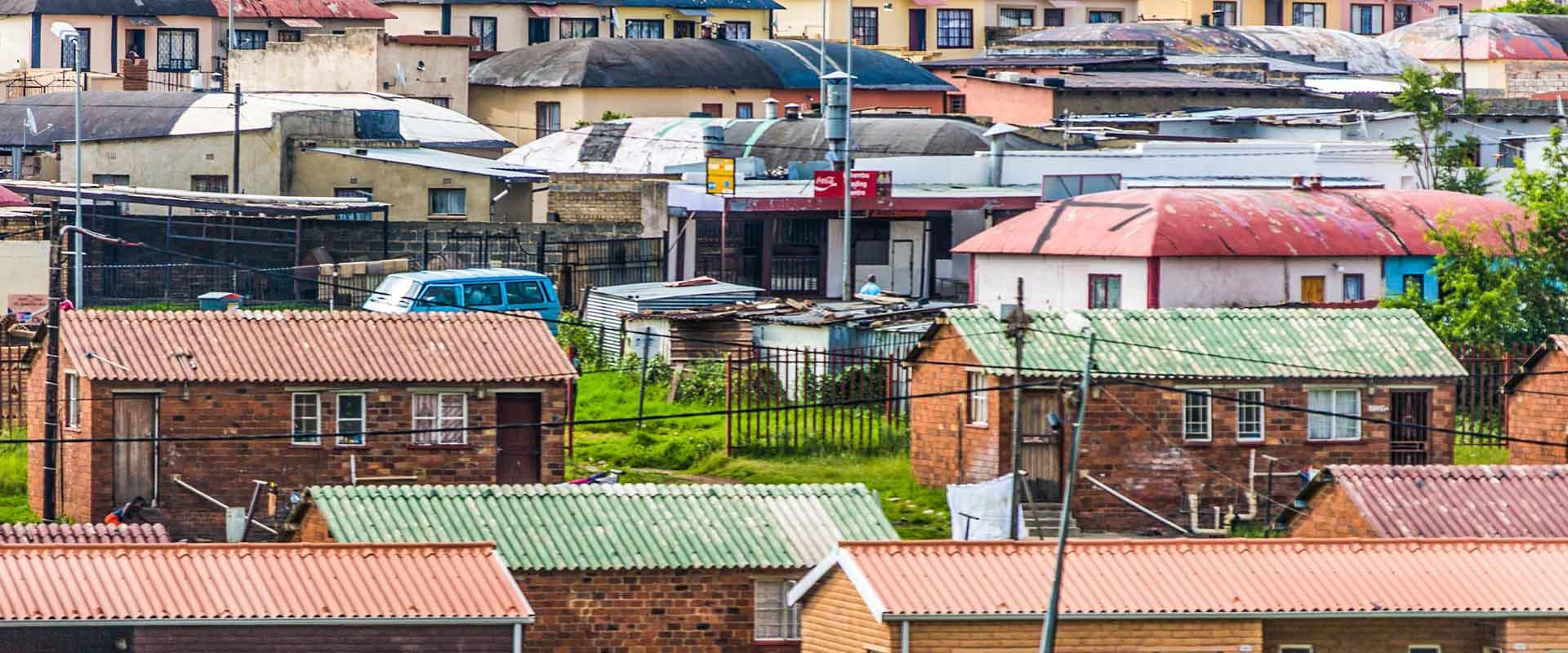Discover Johannesburg
Welcome to Johannesburg, one of the world’s youngest major cities and the economic hub of South Africa. A vibrant, cosmopolitan city that grew from the dust of the bygone gold mining era, Johannesburg is affectionately called Egoli (meaning Place of Gold).
The city itself has been rebuilt four times; first it was a tented camp, then a town of tin shanty huts and then followed by four-story Edwardian brick buildings that were the homes of wealthy mining magnates. Today Johannesburg is a modern city of skyscrapers and modern office blocks with first-world infrastructure, linked to the satellite suburbs by an expansive network of modern highways.
Johannesburg is the Gateway to the vast array of tourist destinations that attract tens of thousands of international visitors each year to South Africa, with the state-of-art OR Tambo Airport being the first port of entry for most travellers.
Johannesburg is located in the heart of South Africa’s major province, Gauteng. It is the financial capital of South Africa, while Pretoria and Cape Town are the legislative and parliamentary capitals of the country respectively.
The inner city of Johannesburg was at risk of falling into a state of disrepair when the large corporations moved their organisations to the more affluent northern suburbs but an extensive government-funded restoration initiative is in place and new life has been breathed into neglected infrastructure.
Johannesburg, together with the surrounding suburbs, is regarded as the largest man-made forest in the world. More than 10 million trees and lush green belts flourish in Gauteng’s stunning climate and fertile soils.
A 4-hour tour of Johannesburg with Moafrika Tours is the ideal opportunity to learn more about the pioneering spirit of South Africa, affectionately called the Rainbow Nation, and to soak up its vibrant, multi-cultural atmosphere.
HIGHLIGHTS OF A JOHANNESBURG DAY TOUR
The majority of international tourists arrive in South Africa at OR Tambo Airport and are whisked off to smart hotels in the northern suburbs of Johannesburg and then promptly on to popular tourist destinations like the Cape Winelands and the northern provinces with its abundance of game reserves and stunning scenery.
Few have the opportunity to explore the inner city of Johannesburg which is unfortunate as it is a destination that is rich in history and once the burgeoning economic hub of the country in the gold mining era.
Like any inner city, it is not a place to wander around on your own without someone who can guarantee your safety. However, with a professional and knowledgeable guide from Moafrika Tours, visitors to South Africa are able to soak up the rich heritage and ambiance of this buzzing city.
Once home to the large mining corporations and financial institutions that have since relocated to business hubs such as Sandton and Rosebank, the inner city of Johannesburg has taken on a new face and is as exciting as it was in its gold-infused hey days. Urban development projects have breathed new life into the neglected city centre and it is attracting spirited homeowners who have embraced the ultimate experience in urban living.
Moafrika Tours provide a guide that has an intimate knowledge of its history and will take you past landmarks that form part of its vital landscape. Suburbs like Hillbrow, Central Johannesburg, Braamfontein and Newtown form part of the tour and a Moafrika Tours guide regales stories of life in that era.
Telkom Tower
Often called Hillbrow Tower as it is located in the heart of this once-vibrant suburb, this impressive tower was the tallest structure in the world until 1978 when it was surpassed by the 270m Mount Isa Chimney in Queensland, Australia.
Telkom Tower is a striking landmark, towering over the city of Johannesburg at a height of 269 meters (883 feet). Construction of the tower began in June 1968 and was completed three years later in April 1971 at a cost of US$2.8 million at the time. It was initially known as the JG Strijdom Tower after the former South African Prime Minister but was renamed Telkom Jo’burg Tower in 2005 at the dawn of South Africa’s democratic independence.
It was constructed for South African Posts & Telecommunications which later became shortened to Telkom. The telecommunication institution was and still is a government-run body.
Telkom Tower was built to extend beyond the height of the tall buildings in the central business district which housed the largest and most prominent business institutions at the time. The towers were a popular attraction up until the early 1980s as the top floor was open to the public.
A revolving restaurant named Heinrich’s Restaurant was a favourite among businessman and tourists who enjoyed panoramic views of the city from its great height. There was another restaurant on the same floor called the Grill Room that did not revolve but was equally as popular, and visitors could step out onto an observation floor positioned 197 meters above the ground level.
Telkom Towers was closed to visitors in 1981 and is now merely landmark structure that draws visitors’ eyes to the central heart of Johannesburg.
Constitution Hill
This magnificent landmark is described as a living museum that tells the story of South Africa’s journey to democracy. It is the site of a former prison and military fort and home to the country’s Constitutional Court.
Its stark halls whisper of the pain and heartache of thousands of men and women who were incarcerated within the walls of the Old Fort’s Women’s Jail and the infamous Number Four Jail. Nelson Mandela, Mahatma Gandhi, Joe Slovo, Albertina Sisulu, Winnie Madikizela-Mandela and Fatima Meer all served time here in this unforgiving jail house aswell as tens of thousands of South African citizens who were imprisoned here during its 100-year history.
Constitutional Hill honours those who fought for justice and liberation and is testament to the importance of preserving sites of atrocity for posterity. A tour with Moafrika Tours allows one to interact on a spiritual level with those that bore the brunt of brutal injustices and to silently celebrate the role they played in bringing about change and democracy.
Constitution Hill invites visitors to touch the textured walls, read the graffiti, listen to the echoes of pained desperation, stride up the Great African Steps, stand in the highest court in our land and learn what constitutionalism means to all South Africans.
Nelson Mandela Bridge
This outstanding structure may be only a mere bridge to daily commuters but it is an outstanding civil engineering achievement and a glistening landmark that links the turbulent past of the old days with the hopes and aspirations of a new democratic age.
The Nelson Mandela Bridge is the conduit for all traffic travelling to and from downtown Johannesburg to the inner city. It was named after the first democratically-elected President of South Africa and a symbolic representation of the man’s stature, esteem and strength.
The bridge was built at a cost of R38 million and is the largest cable-stayed bridge in southern Africa. It was an engineering feat that involved 4 000 cubic meters of concrete, 1 000 tons of structural steel and 500 tons of construction steel. It is 284 meters long, 42 meters high at the north pylon and 27 meters high at the south pylon.
The building of the bridge was part of the ongoing BlueIQ initiative, which has poured over R500 million into the rejuvenation of the downtown area. These projects have breathed new life into the central business district and prevented the historical region from falling into disrepair and becoming a ‘no-go’ inner city zone.
The Nelson Mandela Bridge links the Newtown Cultural Precinct with lower Braamfontein, the Constitutional Court, the University of the Witwatersrand and the Civic Theatre. It was officially opened by Nelson Mandela himself in July 2003.
Mary Fitzgerald Square
The Newtown Precinct was renamed The Mary Fitzgerald Square in honour of a woman who was considered to be the first female trade unionist in South Africa. Affectionately known as ‘Pickhandle’, Mary (1890-1960) was a formidable character and a legend in her time.
The square was previously referred to as Aaron’s Ground and was a meeting place often-used for striker’s meetings in the early 20th century. Today it is the centerpoint of the Newtown urban renewal project and is surrounded by significant landmarks, including the Market Theatre (otherwise known as the Struggle Theatre), MuseuMAfrica, the old Turbine Mill and the Worker’s Library.
Striking lighting features designed by a French lighting engineer, Patrick Rimoux, create a magnificent atmosphere in the evenings when the square hosts a popular weekly music event. Carved wooden heads stand sentry, looking on at passers-by who are either there to soak up its rich historical heritage or there to enjoy a few moments out of the office for some fresh air and sunshine.
Jazz Walk of Fame
A long granite strip engraved with the names of nine of South Africa’s jazz legends is located in Jeppe Street, close to the Mary Fitzgerald Square in Newtown. Each name has a short description alongside it that is an inspirational short story of the musician’s life.
The Johnnie Walker Pioneering Spirits of Jazz Walk of Fame honours music icons that shaped the history of jazz in South Africa and captured stories of bravery, hope, despair and oppression during times of struggle. They are Kippie Moeketsi, Jonas Gwangwa, Hugh Masekela, Winston Mankunku, Miriam Makeba, Chris McGregor, Basil Manenberg Coetzee, Hotep Idris Galeta, Zacks Nkosi and Ntemi Piliso.
Top of Africa
The “Top of Africa’ is located on the top floor of the Carlton Centre in downtown Johannesburg. This striking building is 50-storeys high and the tallest building in Africa. It only just fails to make it onto the list of the world’s top 100 skyscrapers, at a mere height of 40 metres. Visitors enjoy panoramic views of the city below and the lush suburbs beyond.
The Top of Africa is a wrap-around viewing deck with 360° views. On a clear day, you can see the major cities of Gauteng such as Soweto, Rosebank and Sandton and Pretoria in the distance. An abundance of trees that make up the landscape of Johannesburg creates the illusion that the cities are separated by a tranquil green sea.
Visitors look out over the old mine dumps and can visualise what the city would have looked like all those years ago when tens of thousands of desperate immigrants descended on the area, set up homes in shanty huts on the flat, dusty plains and dreamt of making their fortune.
Information boards provide visitors with interesting information, and there is a fascinating exhibition of photographs that showcase the role Gandhi played in South Africa’s activism period.
The Carlton Centre opened its doors in 1973 and was once a thriving business centre that included a five-star hotel, corporate offices, entertainment arenas and abundance of shopping outlets. It has lost some of its former glamour and glitz and the hotel has been closed for many years; however, it is still a great place to visit to experience the dynamic vibe of a modern-day African city.
HOW JOHANNESBURG GOT ITS NAME
The city was allegedly named after Johann Friedrich Bernhard Rissik and Christiaan Johannes Joubert, although there is some controversy over the exact naming of the city. There were several men with the name Johann(es) that occupied positions of authority at the time in the Zuid-Afrikaansche Republiek (ZAR or Transvaal) or were involved in events leading to the founding of the town.
Rissik was a principal clerk attached to the office of the surveyor-general of the ZAR, while Joubert was a member of the Volksraad and head of the government’s office of mines. Both men jointly proposed that the original land should be declared a public goldfield, and that the town should be laid out either on Randjeslaagte Farm or on a section of Doornfontein Farm. Authorities chose the former.
FAST FACTS ABOUT JOHANNESBURG
Johannesburg has a formal population of 3.8 million inhabitants and is the most powerful commercial centre on the African continent. The city generates 16 percent of South Africa’s GDP and employs 12 percent of the national workforce.
Johannesburg boasts urban infrastructure on par with the world’s leading cities, yet the cost of living in the city is far lower.
Johannesburg is recognised as the financial capital of South Africa and the primary economic hub of the country. It is home to 75 percent of corporate headquarters.
South Africa’s only stock exchange was located in the centre of Johannesburg but has since been moved to Sandton City, a financial and retail hub in the northern suburbs of Johannesburg. The Johannesburg Stock Exchange (JSE) is rated as one of the Top 20 exchanges in the world in terms of market capitalisation.
The private medical hospitals in Johannesburg offer healthcare that is first-world, sophisticated and dependable.
The greater Johannesburg metropolis covers an area of 2 300 square kilometres, making it larger than Sydney, London and New York. It is similar in size to Los Angeles.
The city of Johannesburg boomed during the gold rush era but it has evolved from economy driven by mining and industry to an economy based on services and trade, It boasts a high-value manufacturing sector that competes with the major global players.
MORE INTERESTING FACTS ABOUT JOHANNESBURG
The city of Johannesburg is well over 120 years old. It was founded on 4 October 1886 during the Gold Rush period and ballooned in size as tens of thousands of immigrants descended on the town seeking work at the gold mines.
It is one of the youngest major cities in the world. Cairo in Egypt is the only other city in Africa that competes with it on size and scale, making Johannesburg the second largest city in Africa.
Chris Hani Baragwanath Hospital in Soweto, south-west of the central business district, is the largest public hospital in Africa and equipped to serve about 3.5 million people with 3 000 beds for patients.
It is regarded as the largest man-made forest in the world with 10 million trees gracing its landscape at last count. This number is growing as the City Parks has allocated finances to plant another 200 000 trees as part of an urban renewal project. The sea of trees contributes to limiting pollution levels and reduces the noise of traffic and industrialism.
Johannesburg is the largest city in the world that is not built on a coastline, lake or river. Therefore, it is known as the world’s largest dry port. Most cargo destined for the capital city arrives in Durban (KwaZulu Natal) and is transported by road or rail to Johannesburg.
The Cradle of Humankind is situated on the northern outskirts of the city and is one of the richest archaeological sites in the world. Johannesburg lays claim to being home to 40% of the Earth’s human fossils which are found at this site and surrounding areas.
The Telkom Tower in Hillbrow is the tallest building, standing 269 meters (883 feet) above ground level. It was once open to the public and had a revolving restaurant that was a popular tourist destination, but it was closed to the public in the early 1980s for safety reasons.
Johannesburg has an impressive zoo that is more than 100 years old. It is home to the only two polar bears in Africa; one is from Canada and the other is from Japan.
OR Tambo International Airport is the busiest airport in Africa. More than 28 million passengers pass through its doors every year. It was named after a former leader of the African National Congress (ANC) and a stalwart of the struggle movement.
The inner city of Johannesburg has fallen into disrepair as the large corporations moved out of the central business district and illegal immigrants moved into abandoned building. It is unfortunately now regarded as being one of the most dangerous inner cities in the world; however, an extensive surveillance system that scans license plates and monitors movement on every street corner means the response time to a crime situation should be no more than 60 seconds. It is essential that tourists make use of a tour company like Moafrika Tours who have the knowledge and experience to ensure tourists come to no harm.
Johannesburg reverberates to the sound of a unique music style known as Kwaito music. This genre was a form of African house music that originated in the 1990s at a time of great strife. It contains intriguing lyrics with strong activism sentimentality.
Johannesburg also goes by the name of Egoli, meaning Place of Gold. This is a tribute to its rich gold-mining heritage as the city is located on the mineral-rich belt of the Witwatersrand range of hills. Locals call it Joburg or Jozi for short.
The city is one of the 50 largest metropolitan areas in the world. It is not the major capital city of South Africa but it is regarded by locals as being the most important city in the country because it the home base of the largest financial, manufacturing and retail corporations.
The country’s Constitutional Court resides in Braamfontein, linked to the inner city by the magnificent Mandela Bridge.
Johannesburg is located 2 000 meters above sea-level. There is an urban legend that says it takes one minute longer to boil an egg in Joburg than it does at towns on the coast.
South Africa’s currency is the Rand. The origin of its currency is taken from the Witwatersrand, which was where most of South Africa’s rich gold deposits were found.
Street markets and authentic African markets not only add to the character of the city but also play a vital role in its economy. The African craft sector in South Africa as a whole is estimated to employ 1.2 million and contributes R3.4 million to the GDP.
Informal sellers, or vendors as they are known, are part and parcel of the South African way of life. The country has a vast proportion of extremely poor citizens but collectively this group have immense buying power.
MORE ABOUT CONSTITUTION HILL
Constitutional Hill is almost as old as the city of Johannesburg itself. The facilities were previously used to incarcerate that that rose up and challenged the apartheid system and was a harrowing place; overcrowded, unsanitary and rife with diseases. Today, it is an iconic South African landmark that has been painstakingly restored to pay homage to all those who fought for and lost their lives in the struggle for freedom and liberty.
The volume of prisoners held at Constitutional Hill escalated as unrest in the 1950s and 1960s increased. Each new activist campaign filled its prisons with more and more desperate men and women who fought for the basic right to equality and freedom. This included at least 2 000 women who were arrested and imprisoned during a protest march in opposition to the pass laws; including the wives of Nelson Mandela and Walter Sisulu.
Constitutional Hill is most widely known as the place the historic Treason Trial of 1956 was held, when Nelson Mandela, Oliver Tambo and their peers faced charges of treason and terrorism, and who were eventually sentenced to spend a long time in prison.
The prison doors to the Old Fort and Number Four were officially closed in January 1983. Inmates were transferred to the newly-established Diepkloof prison just outside Soweto. The precinct was leased to the Prisons Department and plans were proposed to turn the old jailhouses and buildings into a living museum. This never happened and the site was effectively abandoned. It quickly deteriorated and many objects of historical value were looted or destroyed.
The idea to turn Constitutional Hill into a tourist attraction started doing the rounds in the early 1990s. The other proposal made was to demolish the precinct and build a hotel, complex of theatres, restaurants and entertainment facilities on the site. Fortunately the latter was rejected and Constitutional Hill was transformed into a living museum to capture the history and legacy of its existence.
The building of the Constitutional Court started in 2002 and took several years to complete. It was designed to link up with the surrounding streets and be a safe that is easily accessible to the general public. The result is a public entity that is a celebration of the rebirth of South Africa and its democracy.
A number of public engagement projects were initiated at the time and local residents and former prisoners and prison warders helped the curators with setting up the many informative exhibits.
The Constitutional Court was inaugurated on Human Rights Day on 21 March 2004. A group of 27 children, who were born in 1994, South Africa’s first year of democracy, recited the Bill of Rights in the country’s eleven (11) official languages. An exhibition space honouring the country’s struggle heritage was opened to the public the next day.
The Constitutional Court housed in Constitutional Hill is a deeply symbolic and significant site. Although several sites had been proposed for the court, the Old Fort prison complex was eventually selected on the basis that it was a dramatic landmark that symbolised the transformation of South Africa from a racist, authoritarian society to a constitutional democracy.
It was a site of intense drama, of human emotion, of repression and resistance. The Constitutional Court on the chosen site was built in the hope that it would convert extreme negativity into positivity.
Its location to the neglected suburbs of downtown Johannesburg, such as Hillbrow, Braamfontein and Newtown precinct, was also important. The secondary purpose of the project was that it should contribute to the rejuvenation of areas that had fallen into disrepair and were becoming crime hot-spots.
Although dignified and serious, the Constitutional Court is also welcoming and open. It was created with a sense that the public is free to enter and should feel safe and protected once inside. The idea that the site should embody fairness and justice was key to its architectural design.
The building of the Constitutional Court meant the Awaiting Trial Block had to be demolished but this was done with painstaking care. Every brick from the old block was used in the construction of a wall in the Constitutional Court foyer, a wall in the chamber (directly behind the judges’ chairs) and the Great African Steps, which lie between the court and Number Four.
At the inaugural opening ceremony, former President Thabo Mbeki, said; “The court represents the conversion of the negative, hateful energy of colonialism, subjugation and oppression into a positive, hopeful energy for the present and the future; a celebration of the creative potential of our people that has given us an architectural jewel. Constitution Hill also makes the statement that central Johannesburg will continue to grow and thrive; no longer a place of segregation and urban decay, but a leader in our country and continent as the city of the future.”
Landmark cases that have been presided over at the Constitutional Court and changed the face of South Africa included:
Outlawing of the death penalty: S v Makwanyane
The right to housing: Government of the RSA v Grootboom (2000)
The common-law definition of marriage to permit same-sex couples the same status, entitlements and responsibilities accorded to heterosexual couples: Minister of Home Affairs and Another v Fourie and Another (Doctors for Life International and Others, amicus curiae); Lesbian and Gay Equality Project and Others v Minister of Home Affairs and Others (2005)
Employment discrimination against an HIV-positive person: Hoffman v South African Airways (2000)
Right to healthcare and access to HIV/Aids treatment: Minister of Health v Treatment Action Campaign (2002)
THE HISTORY OF JOHANNESBURG
Visitors on a day tour of Johannesburg with Moafrika Tours need to understand the positive and negative aspects of its growth to fully recognise the significance of its rich history. It was once a lawless mining camp spread out over the hot, dusty plains that bordered the gold mining dumps. Today, 120 plus years later, Johannesburg is one of Africa’s most prosperous and dynamic cities.
Johannesburg rose from the golden dust of the Gold Rush era when a seam of gold was discovered in the late 1880s. President Paul Kruger declared the area open for public digging in September 1886, precipitating an influx of immigrants from around the world who came in search of their fortune and Black migrant labour looking for work.
The region was once a massive inland sea and thereafter the source of the world’s largest-known gold deposit in what was known as the Witwatersrand Basin.
The Place of Gold
A giant meteor struck the earth two billion years ago in an area about 120 kilometres south-west of Johannesburg, and buried the Witwatersrand gold deposits up to several kilometres deep. The gold was protected from erosion and the deepest-level goldmines in the world were needed to extract the precious metal. The meteor impact site is regarded as the oldest and largest visible site in the world.
Australian prospector, George Harrison, discovered the first traces of gold in the Witwatersrand Basin in 1886. His find triggered a gold rush and within three years the Witwatersrand became the largest settlement in southern Africa. It was low-grade gold which meant that, from the start, the mineral claims had to be worked by large syndicates that relied on cheap immigrant or Black migrant labour, rather than individual prospectors.
The wealthy syndicate owners became known as the Randlords. These rich gold barons built their mansions on Parktown Ridge and created an enduring architectural legacy that still remains today.
The barren mine dumps surrounding Johannesburg today are remnants of the waste gangue – the worthless earth and material that was extracted with the gold. Millions of tons of hard rock were extracted and then crushed to separate the earth material from the gold. A cyanide-zinc chemical was used in the extraction process. Crown Mines alone removed 160 million tons of rock, from a depth of several kilometres.
The turbulent and tragic years
The early town planners were insistent that Johannesburg would be a “Whites only” settlement and when formal town planning was implemented, the Black migrant labourers were forcibly removed to a grouping of townships more than 20 kilometres from the central business district. This collection of townships was eventually given the name of Soweto (South-West Townships).
This era of segregation would eventually lead to an era of fierce resistance that was spearheaded by legendary activists, including Mahatma Gandhi and Nelson Mandela. The latter had spent their formative years working as attorneys in Johannesburg but they would play an integral role in campaigns of resistance and the eventual liberation of oppressed people who, for decades, suffered under apartheid rule.
Relationships between the mine barons, English-speaking fortune seekers and the Transvaal’s Boer government became extremely strained which ultimately led to the first Anglo-Boer War that lasted two years. The British powers gained control of the region and the colonial government introduced racial segregation which later became entrenched as the iniquitous system of apartheid.
Strikes and protests characterised that era with Black migrant workers protesting against appalling work and living conditions, and White miners leading the Rand Revolt.
Johannesburg was declared a city in 1928 and by 1948 ‘White privilege’ was entrenched with the ascension of the Afrikaans Nationalist Party. This government enforced the system of apartheid through police and military rule, and relocated thousands of Black workers and families to remote homelands that were created for them. The governing party introduced the appalling pass laws that severely restricted the movement of Black citizens. The Black opposition party was also formally banned.
The city of Johannesburg boomed and high-rise buildings and sky-scrapers characterised the skyline in the 1970s. A second business centre was developed, Sandton City, on unproductive farmland north of the city centre.
The turning point of this era came on 16 June 1976 when members of the South African police force opened fire on hundreds of unarmed schoolchildren who formed part of the Soweto Uprising. The shootings got the attention of the international media and the subsequent fallout from this fateful day was the beginning of the end of the apartheid system.
1980 to 1990 was a turbulent decade where the Nationalist Party fought to retain its oppressive control over Black citizens in a rising tide of resistance. The Johannesburg central business district was the scene of bloody street battles between the state police and angry protestors. Black citizens were subjected to detentions without trial and state security became severely militant. International sanctions were imposed and South Africa found itself in enforced isolation.
1990 was the dawn of democracy. State President FW de Klerk made the momentous announcement that the opposition party (the ANC) would be unbanned and political prisoners would be released. Nelson Mandela addressed a packed stadium at the soccer stadium in Soweto on his release and finally the voices of the oppressed could be heard without fear of detention and recrimination.
South Africa held its first democratic election in 1994. The ANC won with a resounding majority and Nelson Mandela was elected President of what became affectionately known as the New South Africa. Mandela spent a few months at his former home in Soweto after his release but moved into his private home in Houghton, north of central Johannesburg, where he lived until he died in 2013.
South Africa hosted the Rugby World Cup in 1995 and, under the leadership of Nelson Mandela, the country unified to support an almost exclusively White Springbok team. People of all races and from all walks of life cheered on the South African rugby team, waving the country’s new and colourful flag and blowing hard on Vuvuzela’s.
Nelson Mandela walked onto the rugby field at Ellis Park for the final game between New Zealand and South Africa wearing the Captain’s Springbok jersey. It was a time of celebration, unity and joy for the whole of South Africa after years of division and racial strife.
South Africa once again played host to a World Cup event in 2010 and the world descended on the Rainbow Nation for the FIFA World Cup Soccer Tournament. The opening ceremony was held at Soccer City in Soweto.
JOHANNESBURG WEATHER AND WHEN TO GO
Johannesburg is regarded as having the best climate in the world. The summers are warm and dry, and the winters are moderate. The summer months are between October and April, and the colder winter season is late April to September.
The temperature in winter can drop quite low in the evenings and warm clothes and shoes are needed. Compared to winters in the northern hemisphere, Johannesburg’s winters are still considered to be relatively mild. The days are usually sunny but crisp; the evenings are cold and early morning can be very nippy. Winters are very dry and tourists visiting South Africa take some time to acclimatise to the dryness.
Johannesburg has a summer rainfall season, which begins in late October and continues through to early May. When the global climate is in sync, Johannesburg’s rainy season is characterised by bright, sunny days with dramatic thunderstorms late afternoon and evening.
The Rainbow Nation
Johannesburg is the economic hub of the Rainbow Nation, a title affectionately coined by the great Archbishop Desmond Tutu. There are eleven (11) official languages but most citizens are adept at holding a conversation in basic English if it is not their home language.
There is so much more to South Africa than spectacular scenery and the Big 5, and you will experience the soul of this multi-cultural country on a tour of Johannesburg and Soweto with Moafrika Tours. When you walk through the streets of the city of Johannesburg, you will witness first-hand the unification of a once deeply-divided country.

